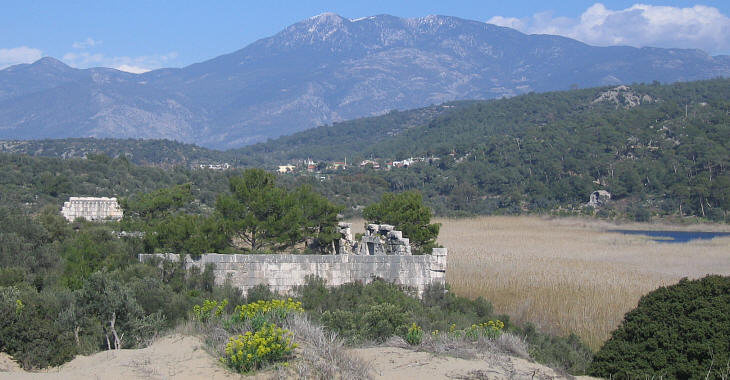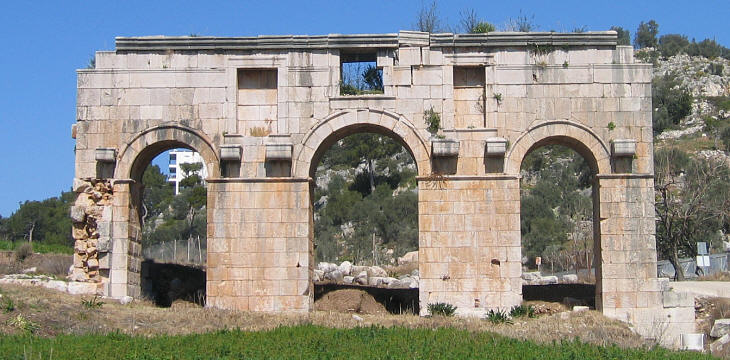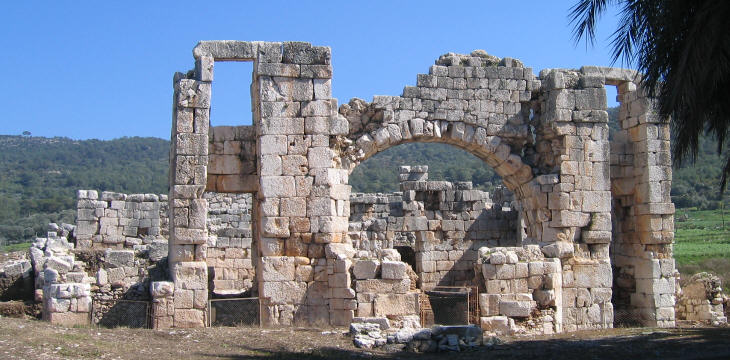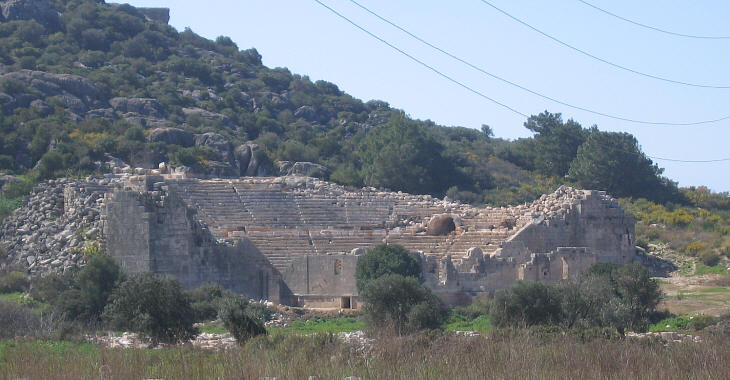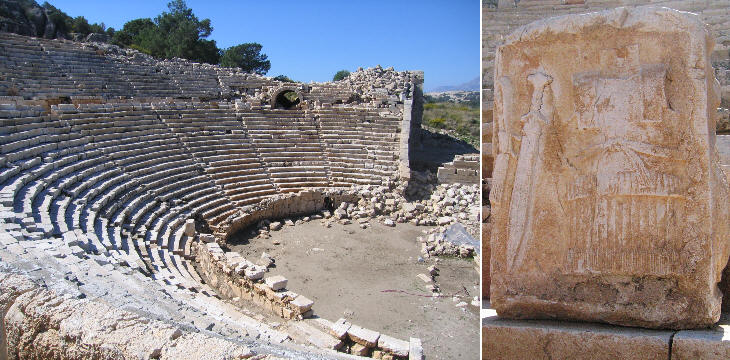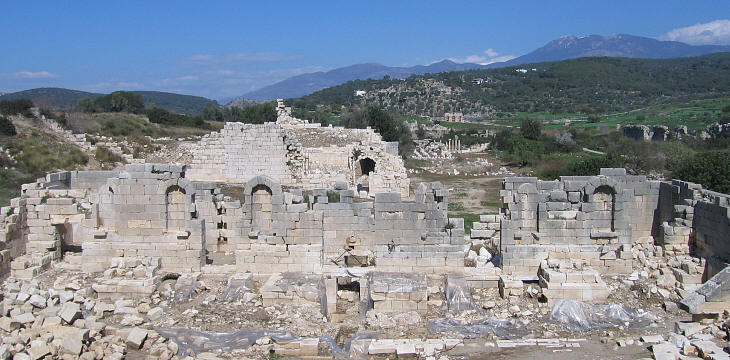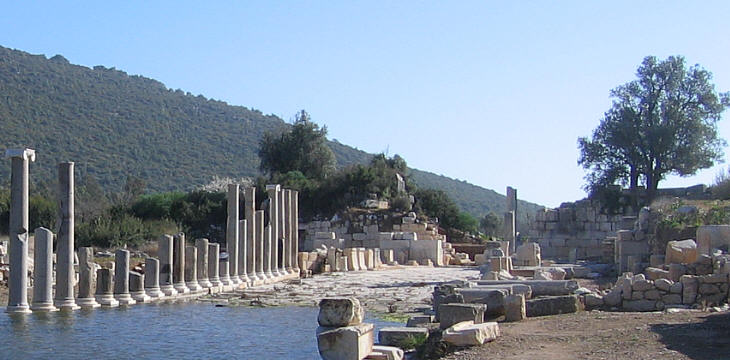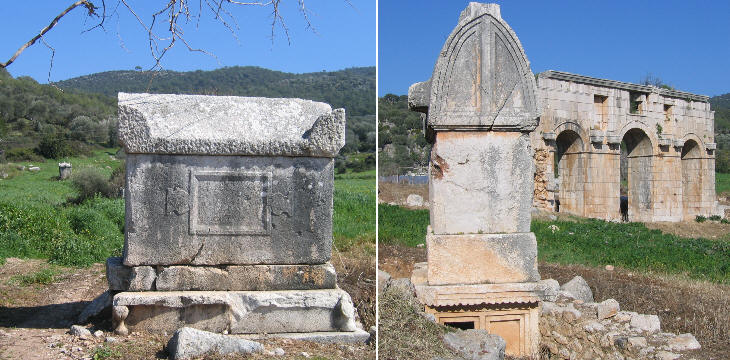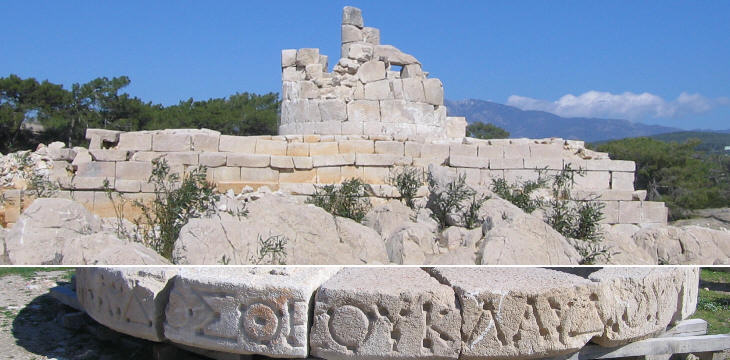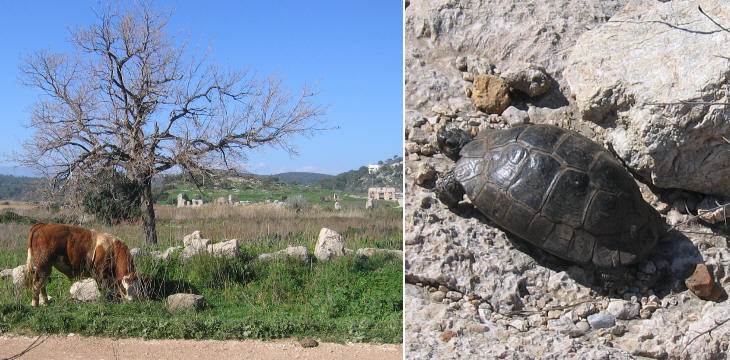  What's New! Detailed Sitemap All images © by Roberto Piperno, owner of the domain. Write to romapip@quipo.it. Text edited by Rosamie Moore. Page added in May 2008. |
 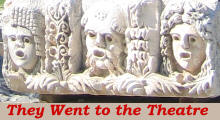 - Patara - Patara(theatrical masks at Myra) Patara is one of the best known Turkish summer resorts. Luckily it has been incorporated into a national park and no hotels or other tourist facilities have been built near its long and sandy beach. Bathers can reach it via a road which crosses the archaeological area of ancient Patara.
The sand which is today's resource of Patara, in the past was its main worry. The well repaired harbour which served Xanthos and other important towns of Lycia, was always threatened by silting. Although in antiquity engineers did not have powerful engines they managed for centuries to keep free from obstructions the mouth of the river where the harbour was located. Patara was so important for supplying Lycia that an imposing granary was built during the reign of Emperor Hadrian (he also built a similar granary at Andriake). It consisted of eight aligned storage rooms, each with its own door facing the harbour. Currently (March 2008) the rooms are filled with vegetation; the roofs have collapsed but from what is left of the supporting walls one can understand the granary was covered with high vaults.
The origin of the triumphal arch which for many centuries was almost the only evidence of the old town (the other monuments lay under the sand or were covered by vegetation), was at first thought to have been built to celebrate a visit by Emperor Hadrian. Archaeologists now believe it was celebrating the completion of an aqueduct built by Trebonius Proculus Mettius Modestus, Roman governor of Lycia and Pamphylia. This occurred around 100 AD; Modestus is recorded as having been appointed consul in 103. The arch was decorated with statues of Modestus (who was not a modest person) and his relatives.
Patara had four baths: those near the harbour are also known as the Date Palm baths owing to a nearby group of such trees. The rooms of the baths were placed one next to the other. They were most likely decorated with marbles, but these were calcined during the Byzantine period in order to obtain lime.
According to a 1989 guide only a few rows of seats emerged from the sand. Now that the site has been fully excavated the archaeologists have uncovered one of the largest theatres of Turkey.
The theatre dates back to Hellenistic times, but it was enlarged and modified during the Roman rule. In particular after the earthquake which struck the region in 141 a major restoration was carried out during the reign of Emperor Antoninus Pius. Part of the decoration is based on military symbols, an indication that the theatre was used for gladiatorial fights.
From the highest seats one enjoys an impressive view of Patara; archaeologists have uncovered a bouleuterion, a small theatre used also as an assembly hall, and the site of the agorÓ, the city's market place/forum. Excavations had to deal with two different environments, sand dunes and marshland, both very tricky because they tend to cover again what has been brought to light.
An impressive street flanked by columns (with shafts of Egyptian granite and marble capitals) linked the harbour with the agorÓ. It was uncovered and partially reconstructed in 2007. Although further archaeological work will bring to light the part of the street which is still under water and ground, it is unlikely the site will be more evocative than it was in March 2008 when the photo shown above was taken.
Apparently Patara did not have large temples, but it had many small temples. This should not come as a surprise: Patara was a commercial city and it had a cosmopolitan population; merchants and seamen came from many different countries. Before sailing again they needed to make offers to those specific deities they felt were more able than others to grant them a safe journey. This can be observed also at Ripa, the commercial district of Rome. Temples consisted of a finely built cell and of a very small portico (in most cases this was lost).
Archaeological excavations have not yet identified Lycian rock-cut tombs such as those of Kaunos or Tlos. There are however many free-standing tombs, some of which have the typical Lycian "Gothic" lid, which is thought to represent a capsized boat.
The most recent yield of excavation campaigns is a round building on a mound which most likely was located at the northern entrance of the harbour. Due to its shape and position the building is thought to have been a lighthouse. From the number of stones found near its foundations it is likely it had at least five storeys. The most curious thing about this building is the high number of inscriptions, all of a very large dimension, which were found by the archaeologists. They have holes which suggest bronze letters were placed to make the inscription more readable (see a page on Roman inscriptions).
The image used as background for this page shows a detail of a relief which decorates the baths. Introductory page Miletus Priene Didyma Euromos Iasos Milas Telmessos Tlos Kaunos Xanthos Letoon Antiphellos Simena Myra Phaselis Termessos Attalia (Antalya) Perge Aspendos Side Map of Turkey with all the locations covered in this website  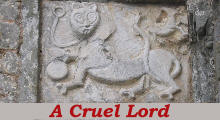 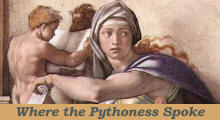  |
